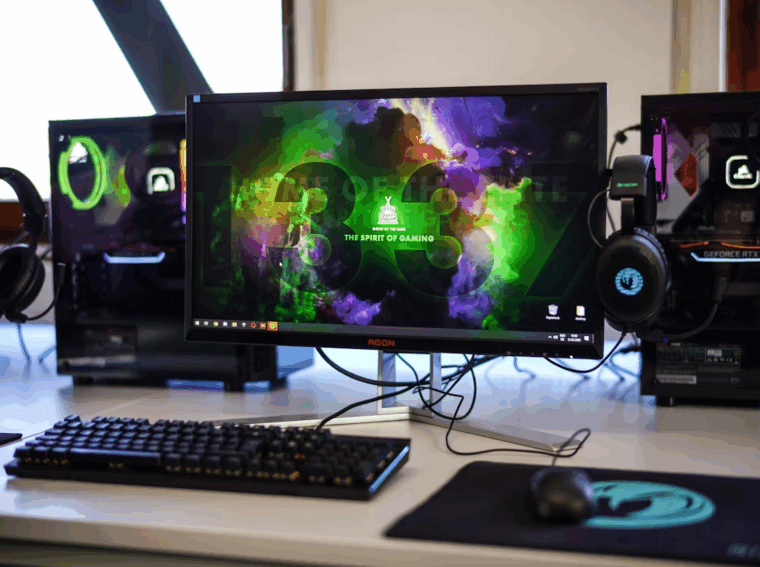Strong gameplay isn’t enough to hold a player’s attention anymore. What matters now is how the platform feels to use, how easily it fits into daily life, and how well it connects people. Gamers expect smooth interaction, personalised features, cross-device access, and tools that support creativity and community. This article breaks down the features that go beyond support, logins, and fast payments, the ones that turn a decent platform into a place players want to stay.
1. Cross-Platform Synchronization and Continuity
Players no longer confine themselves to a single device. Professional gamers may train on PC, stream on consoles, and chat on mobile. Modern platforms that authentically support cross-platform progression win the loyalty of this segment. Synchronization of achievements, inventory, and stats across devices empowers gamers to pick up exactly where they left off, regardless of time or place. The seamless continuation of progress creates confidence in the platform and sustains long-term engagement.
Many of the best online casinos now follow a similar approach, offering consistent experiences across desktop, tablet, and mobile. Players can enjoy thousands of games, access generous bonuses, and benefit from tested and verified fast payment methods that keep the experience smooth from start to finish. This level of cross-device consistency isn’t just a convenience; it’s become a core expectation, and platforms that deliver it, from competitive games to top online casinos, earn lasting trust by meeting players wherever they are.
2. Hyper-Personalization Through Adaptive Content
Personalization stands as a defining feature in the digital gaming landscape. Gamers now expect platforms to tailor content based on their behavior, recommendations for skins, events, or in-game challenges that relate to their history and preferences. When a platform adapts dynamically to a player’s evolving style, it creates a sense of belonging. But personalization must be delivered subtly: a curated suggestion rather than a barrage of automated prompts. The result is a bespoke gaming experience with relevance at every turn, without feeling intrusive.
3. Integrated Performance and Gameplay Analytics
Insight into personal performance enhances engagement, especially for competitive players. Platforms that provide in-depth statistics, win/loss ratios, time-in-match metrics, heat maps, and decision patterns empower users to reflect, improve, and refine strategies. The inclusion of visual dashboards and trend tracking reveals strengths and weaknesses over time, lifting the platform beyond a passive entertainment tool into a learning environment. Players appreciate the transparency and control this level of insight provides.
4. Visually Cohesive and Intuitive User Interface
A visually appealing and easy-to-navigate user interface transforms an otherwise average gaming environment into a standout destination. Gamers gravitate toward platforms that present a clean layout with consistent typography, coherent color schemes, and intuitive iconography.

Every interactive element, from friends lists to match lobbies, should feel purposeful and responsive. A platform that anticipates player behavior, responding with minimal clicks and clear feedback, conveys professionalism and respect for the user’s time. Such seamless design fosters trust and encourages players to engage more deeply.
5. In-Platform Live and On-Demand Streaming Tools
Live streaming has become inseparable from gaming culture. Platforms that embed streaming functionality directly into their interface, without requiring external software, offer tremendous convenience. Whether broadcasting live matches or accessing a library of on-demand content, gamers benefit from immersive discovery. Features such as chat overlays, viewer interaction, and commentary modules turn casual play into social events. This integrated approach fosters community and promotes platform loyalty alike.
6. Customization Through Mods and Content Creation
Allowing players to shape their own experiences is a hallmark of lasting platforms. Support for community-created mods, skins, and maps not only extends gameplay longevity but also encourages creativity. Players actively engaged in content creation feel a strong emotional connection to the platform. Clear guidelines, easy upload mechanisms, and in-platform recognition, such as featured content, further validate creators’ efforts. In turn, the broader gaming audience benefits from an ever-changing ecosystem shaped by collective imagination.
7. Structured e‑Sports and Tournament Ecosystem
Competitive gaming has matured into large-scale, organized events. Platforms that go the extra mile by providing tools for tournament creation, bracket management, spectator modes, and official rankings give gamers the infrastructure they crave. Whether casual clan wars or professional circuits, the ability to schedule matches, track progress, and share highlights significantly ramps up engagement. It offers both recreation and ambition, turning casual teams into serious contenders.
8. Adaptive Accessibility and Inclusive Design
Inclusion extends access and fosters empathy. Gamers appreciate platforms that accommodate diverse needs, adjustable subtitles, scalable UI fonts, colour‑blind modes, and customizable control layouts. Attention to latency and bandwidth optimization ensures players from varied regions can join on equal footing. Accessibility can also mean choices about visual and audio feedback, offering alternate ways to experience the platform. When a service takes inclusion seriously, it resonates deeply with players who might otherwise feel overlooked.
9. Smart Social Dynamics and Mentorship Systems
While simple chatrooms and guild tools remain essential, modern platforms are exploring social connections more meaningfully. Mentorship systems, where experienced players can coach newcomers, foster positive communities and reduce toxicity. Features like reputation scores, opt‑in voice-room groups, and collaborative mission sets enhance interaction. When gamers feel comfortable, respected, and supported, they are far more likely to return, recommend the platform, and contribute to a virtuous cycle of growth.
10. Responsive Community Feedback and User‑Driven Roadmaps
Effective communication between developers and players can build trust and enthusiasm. Platforms that actively collect user feedback, via in‑app surveys, feedback forums, or testing programs, demonstrate respect for their audience’s voice. The most successful platforms publish public roadmaps that outline upcoming features, community requests, and maintenance plans. Transparency regarding release schedules, bug fixes, and design rationales empowers users, giving them a stake in the platform’s evolution. It cultivates shared ownership and long‑term loyalty.
11. Rich Overlay of News, Events, and Seasonal Content
Regular content updates keep gamers coming back. Whether it’s seasonal challenges, special in‑game events, news highlights, or thematic bundles, the ability to integrate this content directly into the platform interface boosts awareness. When presented with polish, limited-time offers, countdown timers, and exclusive drops are compelling reasons for engagement, social sharing, and even re‑entry after a hiatus. Celebrating moments and offering surprises helps the platform feel like a living hub, rather than a static schedule.
Conclusion
Today’s top gaming platforms succeed by offering more than just gameplay. Personalisation, creative tools, meaningful community features, and transparent updates all matter. Platforms that combine smart design, inclusivity, and trust become more than launchers; they become spaces players return to, grow in, and rely on.
